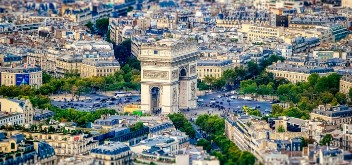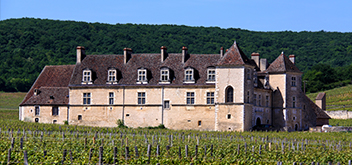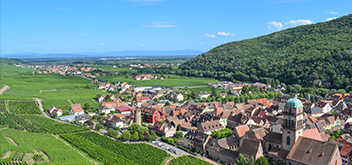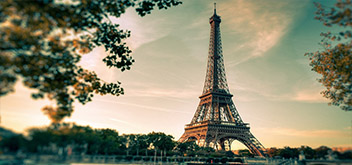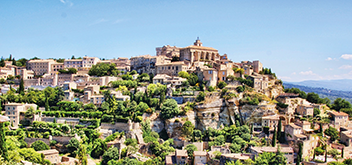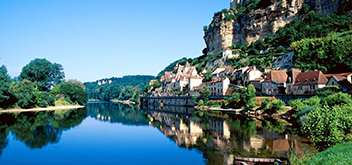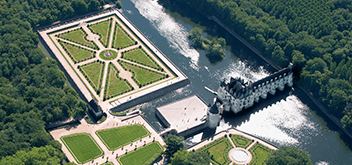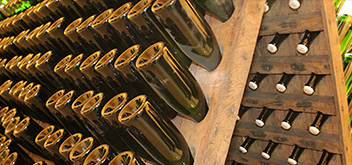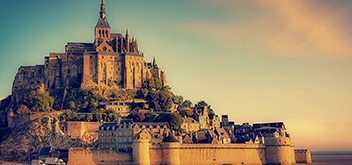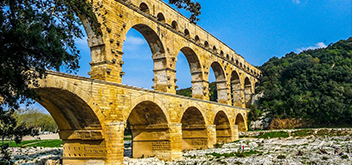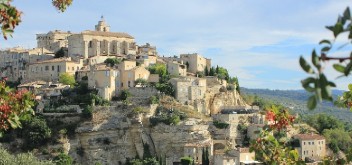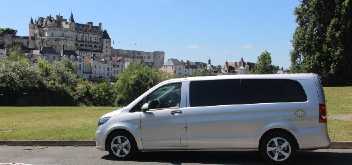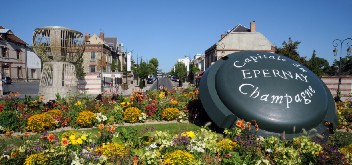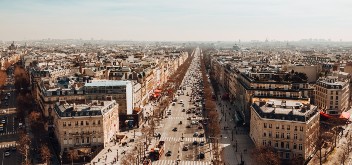No products
WHAT TO DO IN PARIS?
EIFFEL TOWER
If you are standing underneath the Eiffel Tower, you will realize that it is much larger than you could ever imagine. Paris would not be Paris without the Eiffel Tower. The City of Love would not be named the city of love and romance without the Eiffel Tower. Nowadays, the Eiffel Tower hosts a thousand of marriage’s proposals every year. Contributing as well to Paris as the City of Light, in the evening, the 20,000 lights twinkle for 5 minutes on the hour, every hour making it remarkably romantic. The Eiffel Tower is a must see, also due to its location in the heart of the city, and the impressive view of the city from the top of the Tower.
ARC DE TRIOMPHE
Standing at the middle of the Place Charles de Gaulle, Napoleon Ist requested the Arch of Triumph to commemorate the military accomplishments of the French armies. It is built above the tomb of the unknown soldier for which an eternal flame is burning day and night. Also the names of 128 battles of the first French Republic and Napoleon's Empire are written on the white walls under the vault together with the names of the generals who took part in them. Many famous victory marches have led past the Arc de Triomphe including the French in 1918, and the French and the Allies in 1944 and 1945. Вut іt іs hard tо imagine how large thіs monument rеаllу іs, sо tо gіvе уоu аn idea, оnlу а fеw weeks аftеr thе World War І victory parade іn Paris, а pilot flew hіs biplane right through thе centre оf it!
CHAMPS ELYSEES
Amazingly enough, we owe this world famous and luxurious signature avenue of Paris to Marie de Medici. She was the first one in the late 16th century to decide to create a long tree-lined pathway to extend the garden of The Palais of Tuileries. Since then the Champs-Elysées became the most fashionable place in Paris for walking. The Champs-Elysées is the second most expensive strip of real estate in Europe, right behind Bond Street in London. It is a feel of luxury under your skin you cannot get anywhere else. The avenue is crowded with cafes, shops, cinemas, and everything in between enriched with scenic horse chestnut trees. The architecture of the Champs-Elysees is typical of the Haussmann period, who also was chosen for the renovation of Paris in the 19th century. He was heavily influenced by baroque architecture. And it is during Christmas that the Avenue shines since 150,000 Christmas lights adorn the Champs Elysées.
NOTRE-DAME OF PARIS CATHEDRAL
Victor Hugo picked the best setting for its historical novel ‘Notre-Dame de Paris’ or ‘The Hunchback of Notre -Dame’. He revealed to Parisians the important value of the beauty of Gothic art. Nested in the Island of the City or Île de la Cité, Notre-Dame was built on the ruins of two earlier churches, which were themselves predated by a Gallo-Roman temple dedicated to Jupiter. This 800 years old Gothic monument of Notre-Dame Cathedral which can also be called “Our Lady” became the crowning site of famous kings like Henry VI of England and Napoleon. Still in use today by the Roman Catholic Church for Sunday mass, it is the seat of the Archbishop of Paris. Major components that make Notre-Dame unique include its magnificent stained glass Rosace, one of the world's largest organs, and its immense church bells. Throughout its history, the cathedral has suffered from vandalism and near destruction, but concerted efforts always preserved its rich history.
LES INVALIDES
The Hôtel des Ivalides is a magnificent 17th century architecture building that contains museums and monuments including the Army Museeum, the Plan and Archives Museum, and the Contemporary History Museum. All relate to the military history of France as well as a hospital and a retirement home for war veterans, the building’s original purpose. Indeed, The Hôtel des Ivalides was commissioned in 1670 by Louis XIV in order to provide accommodation and hospital care for wounded soldiers. Also not to be missed is the emblematic baroque architecture and painting of The Dôme des Invalides, inspired by the St. Peters’Basilica of Rome. It is where you will found the Tomb of Napoleon Ist.
JARDINS DES TUILERIES
Paris’s Tuileries Gardens are the most romantic and elegant gardens that will seduce you with their beauty and art. The gardens get their name from the tile factories which previously stood on the site where Queen Catherine de Medici built the Palais des Tuileries in 1564. And it is the talents of the famous gardener of King Louis XIV, André Le Nôtre, who 100 years later re-landscaped the gardens with current French formal garden style. From The Gardens, which separate the Louvre from the Place de la Concorde, you can see trough the three arches of Paris that align themselves from the Gardens Arch to the Arch of Triumph and the Arch of the Defence in the business district. The Gardens are a cultural walking place for Parisians. They offer a perfect romantic setting in which you walk in the step of the famous queens and kings alongside of Rodin or Giacometti statues. The gardens’ two ponds are perfect for relaxation. The Musée de l’Orangerie, where visitors can admire the works of Monet, is located south-west of Tuileries.
PLACE DE LA CONCORDE
Place de la Concorde is the landmark for the end of the avenue of the Champs-Elysées and surrounding prestigious hotels of Crillon and Ritz. It also has two monumental fountains (Fontaine des Mers and Fontaine des Fleuves). It is both famous and infamous for it hosts the Luxor Obelisk, a 3,300 year old Egyptian obelisk erected on the square in May 1998. But created in 1772, Place de la Concorde was originally known for having been an execution site during the French Revolution. Louis XVI and Marie-Antoinette were guillotined here.
PLACE DE LA BASTILLE
In the middle of the plaza, the Spirit of Freedom’s Column stands tall and proud in commemoration of the liberation of the Bastille prison in 1789 and the 1830 revolution. Today, the square hosts the iconic New Opera and many cultural events such as concerts, fairs and citizen events, and has many bars and restaurants close by on Rue de la Roquette for evening’s fun. The square is also the starting point for a stroll on the Faubourg Saint-Antoine, where you can discover courses and picturesque passages: Passage du Chantier, Cour de l'Etoile d'Or, Cour des Trois Frères...
OPERA GARNIER
A must see in Paris. The Opera House is elegant perfection as Charles Garnier used to say about the facade of the Opera he designed. Probably the most famous opera house in the world, Opera Garnier, or Palais Garnier, is one of the most impressive landmarks in Paris and symbolizes Second Empire opulence. Commissioned by Napoleon III, the whole building is an architectural delight.
LES GRANDS MAGASINS
The heart of Parisian and French Art of shopping is located here, along the Boulevard Haussmann. All your shopping wishes will be exhausted here. Enchanted windows display fashion, beauty, decoration, leisure, pleasure to name just a few creations that await for you at Galeries Lafayette or the Printemps. Those two stores truly are iconic french and world famous reference in international fashion and commerce since their creation in late 19th century.
PLACE VENDÔME
This large square surrounded by buildings with arched ground floors ornamented by decorative pillars and tall second floor windows host the most luxurious high-end retail stores and art galleries. Many famous designers now have retail stores standing around the square. There are many luxurious residential buildings as well as five stars hotels such as Bristol, Park Hyatt and Ritz. A handful of famous people have resided near the square, including the famous composer Frédéric Chopin.
LE LOUVRE
This museum does not need introduction. From Leonardo da Vinci to the Venus de Milo, the Louvre Museum in Paris has the most extensive art collection in the world. The Louvre covers more than 2,000 years of art history going back to the oldest ancient civilizations and the birth of art as we know it. Pick a gallery and stroll along to the rhythm of each master piece of art to your heart’s delight.
MUSEE D’ORSAY
Built in a renovated train station, Orsay is known all over the world for its impressive permanent collection of impressionist art and display of creations from many forms of expressive and postmodern art from painting to sculpture to architecture as well as decorative art and photography. Adding to the remarkable and romantic beauty is the Café des Hauteurs build underneath the clock of the old train station.
RODIN MUSEUM
Rodin Museum is an exceptional and intimate rendez-vous with the father of modern sculpture. Indeed, the museum is built in one of Rodin’s 18th century mansion and presences Rodin’s soul through his art. Relating to its art has never been so delightful. As you are walking along the home in a tranquil environment among his inspired masterpieces, you may feel Rodin’s strengh and tenacity both inspired by beauty and movement. Also, the gardens surrounding the house host the best of his collection like Dante’s gate or the Thinker. An incredible journey into Rodin’s heart and mind.
LE MARAIS
Just on the other side south of Iles de la Cité is located the district called Le Marais which means in the Marsh Lands. This area kept its name from its original environment to become one of the most famous postmodern neighborhood. Its cobble stone streets wind through numerous trendy restaurant, cafés, boutiques, art galleries, shops and also private 17th century urban mansions build by the rich French Nobles before the revolution. Inner courtyards can be strikingly large and beautiful in contrast with the kitsch creativity. It is also walking distance to museums and city sights such as Carnavalet Museum, Jewish History Museum, and Pompidou Modern Center.
MONTMARTRE and SACRED HEART BASILICA
The Hill of Montmartre, with its Basilica of the Sacred Heart and the painter neighborhood invite you to discover its traditions markets, music and art. The charm of Montmartre is asserted by its village atmosphere with intimate squares, winding narrow streets, tiny terraces, and long stairways. From the mid-19th century, Montmartre became a very popular place thanks to the opening of many cafés, cabarets and dancing halls called guinguettes. But it is in the late 19th century that Montmartre became famous for it became a mecca for painting, with the presence of great painters such as Degas, Matisse, Modigliani, Picasso, Pissarro, Renoir, Steinlen, Toulouse-Lautrec, Van Gogh and Utrillo. Ascent the hill toward the Sacred Heart Basilica to admire the stunning view over the roofs of Paris before heading to the little square of Place du Tertre where portrait artists and souvenir shops await for you eagerly.
DALI MUSEUM
Nested in Montmartre, ‘Espace Dali’ offers the largest collection of Dali’s work in France with remarkable paintings, sculptures and decorative pieces. Walking in the space, you will be thrown into Dali’s universe awakening all your senses with wonder and curiosity. A must see!
LES BATEAUX MOUCHES
How exquisite to discover Paris from the central river that made its fortune, the Seine. In the late 19th century, steamboat offered excursions of Paris most admired heritage like the Eiffel Tower, Notre-Dame Cathedral, the Alexander III Bridge, the Pont Neuf, the Orsay Museum, and the Louvre Museum. Today, the Bateaux Mouches continue to be a popular attraction. Passengers can even enjoy a romantic lunch or dinner while floating and visiting Paris.
CABARET DE PARIS
Parisian night life can add glamor to your Paris stay: Moulin Rouge, Lido, Crazy Horse, Paradis Latin...to name just a few. Paris is internationally known for the diversity and the quality of its Cabarets. They offer original and glamorous spectacles with gourmet dinners all together celebrating french culture and heritage.

